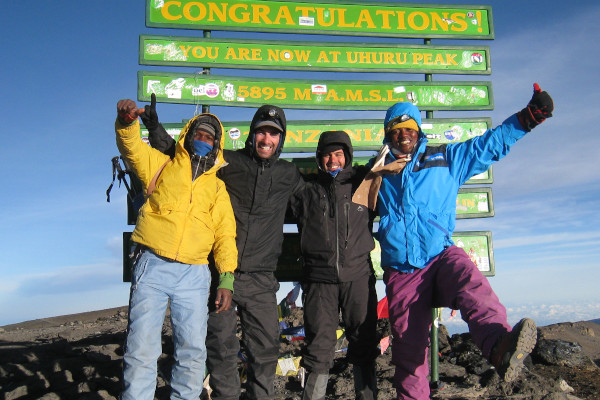Over the last decade, boot camp-style training camps for top cycling teams have reached the height of fashion, with cyclists and staff pitching up in some remote part of Europe where they take part in moderate and muddy exercise.
The idea is that this makes a team more unified
Just two weeks after the conclusion of the 2014 season, the full complement of 72 riders and staff of the Russian-registered cycling team, Tinkoff-Saxo, spent a week at 19,341-foot-tall Mount Kilimanjaro, Africa’s highest mountain, for this reason.
My Quick Takeaways:
What happens when pro cyclists swap bikes for boots? Here’s what the Tinkoff-Saxo team’s Kilimanjaro climb reveals:
- Elite Athletes Struggle Too: Even top-tier cyclists found Kilimanjaro’s altitude and conditions challenging—proving that fitness alone isn’t enough.
- Acclimatisation is Everything: The team had to adapt to the thin air, showing that a slow, steady pace is key to reaching the summit.
- Mental Toughness Matters: Despite their physical conditioning, the real challenge was mental—determination is just as important as strength.
- A Unique Team-Building Experience: The climb pushed them beyond their comfort zones, strengthening camaraderie and resilience.
- Kilimanjaro is a Great Equaliser: No matter how fit you are, the mountain demands respect, patience, and the right preparation.
Even elite athletes have to dig deep to conquer Kilimanjaro—are you ready for the challenge? Let’s learn more.

Plan your Kilimanjaro trek
Get a quote from my recommended local Kilimanjaro operator
Israel, South Africa and the Canaries had already been done. Camps had been curtailed in recent years for financial reasons, but the team has much greater resources since the over-the-top Russian businessman, Oleg Tinkov, assumed ownership.
Boot camps for cyclists were popularised by the Dane, Bjarne Riis, Tinkoff-Saxo’s manager.
In 1996, he took the team to his home country where, guided by such experts as BS Christiansen of the Danish Ranger Corps, the cyclists drove blindfold, climbed poles and navigated the chilly waters of northern Denmark.
In later years, there was pistol shooting, swimming two miles in open waters in Spain and remodelling a cycling school in Israel.
Hiking Kilimanjaro is a matter of walking rather than climbing.
As experienced Italian mountain climber, Paolo Rabbia, told his country’s Gazzetta dello Sport newspaper, “the climb to the summit is via a path and isn’t difficult or dangerous.” None of the cyclists, however, were accustomed to extended hiking, especially where there are drastic gains in altitude in the space of a few days.
Some have asked if the venture was worth risking injury to Tinkoff-Saxo’s stars, the Slovakian, Peter Sagan, and the Spaniard, Alberto Contador.

Plan your Kilimanjaro trek
Get a quote from my recommended local Kilimanjaro operator
Contador, the team leader, recently underwent minor surgery to his knee. Sagan is a fresh recruit who signed a contract that was estimated to be $5 million and Contador’s earnings are also in the millions, showing what is at stake.
Riis countered that the best team “has a bit of everything: points, victories, but also members that are proud to be part of it.”
Apparently, the Kilimanjaro trip has accomplished this by making Tinkoff-Saxo “a very strong and unified group.”
It was a fine way to break in new recruits. Prior to the event, Riis spoke of his desire to identify leaders and see how his team members reacted to stress in a different environment and how they worked together.
He declared that it would be “a very good challenge for everybody” that would echo situations that occur at races.
He added that for some time, team members had been asking him to organise a team-building trip.
The expedition faced the worst Kilimanjaro weather conditions seen in a decade. Contador spoke of the team going through “difficult moments” on what was the highest mountain he had ever encountered.
He told of how the team worked together, “sharing good times and some really difficult moments,” just as Riis had intended. There was much rain in the first three days, which proved a greater problem than the altitude or basic exertion.
The last day saw an abundance of wind, which fortunately died down slowly. Contador was the first team member to reach the summit.
Donations from sponsors and technical partners were doubled because more than 70 percent of the team completed the hike. They would have been tripled if 90 percent had done so.

Plan your Kilimanjaro trek
Get a quote from my recommended local Kilimanjaro operator
My Final Thoughts
And there you have it: an inspiring story to help you climb Kilimanjaro! Do you have any exciting aspirations when summiting Kilimanjaro? Let me know in the comments below and let's share the love.
Start planning for Kilimanjaro now by reading my other handy guides:
- Training for Mount Kilimanjaro climb
- What is the best month to Climb Kilimanjaro
- Kilimanjaro trekking routes
- Kilimanjaro facts for kids
- Everest vs Kilimanjaro
Reference: Tinkoff-Saxo Website
